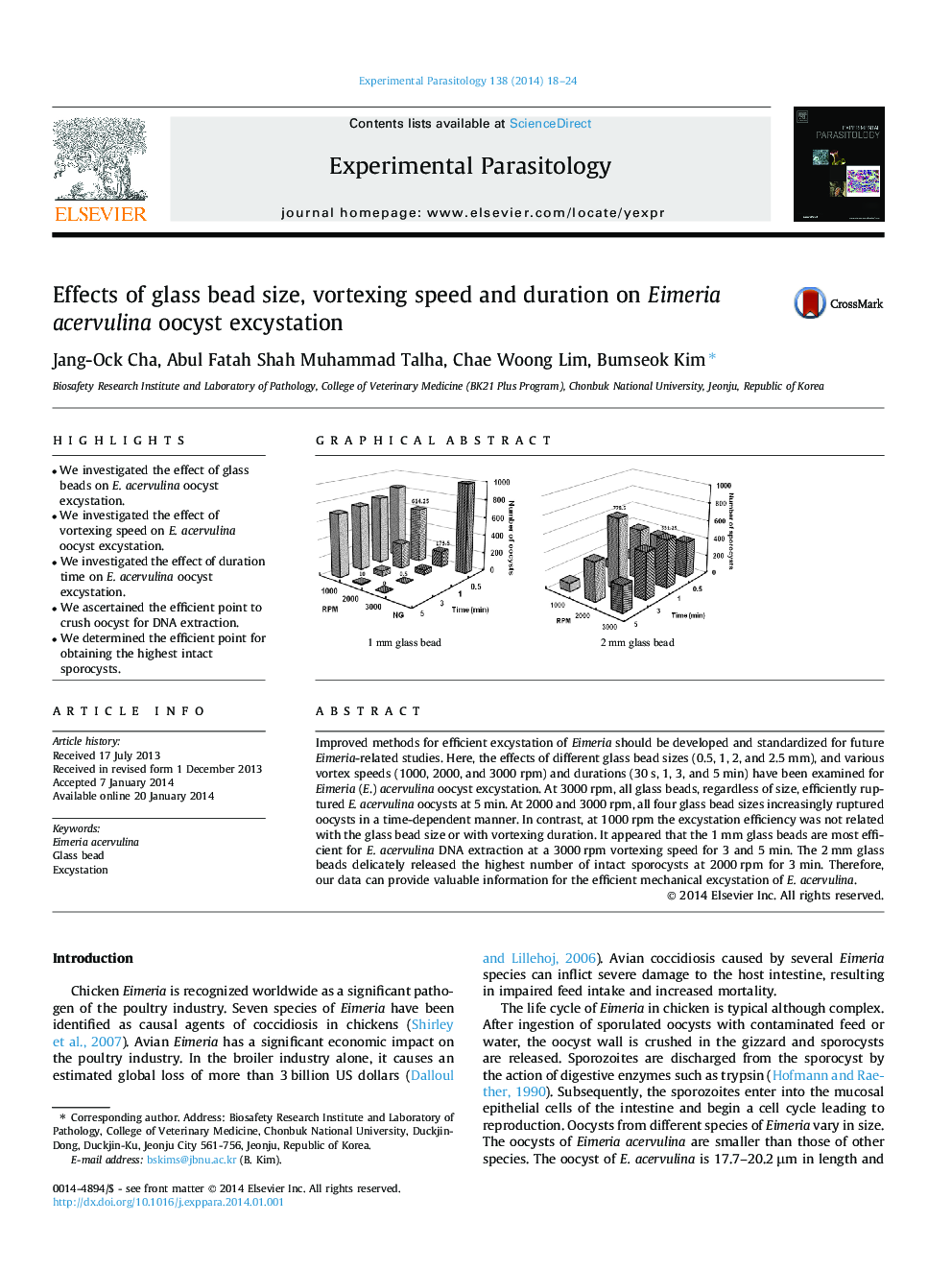| Article ID | Journal | Published Year | Pages | File Type |
|---|---|---|---|---|
| 4371154 | Experimental Parasitology | 2014 | 7 Pages |
•We investigated the effect of glass beads on E. acervulina oocyst excystation.•We investigated the effect of vortexing speed on E. acervulina oocyst excystation.•We investigated the effect of duration time on E. acervulina oocyst excystation.•We ascertained the efficient point to crush oocyst for DNA extraction.•We determined the efficient point for obtaining the highest intact sporocysts.
Improved methods for efficient excystation of Eimeria should be developed and standardized for future Eimeria-related studies. Here, the effects of different glass bead sizes (0.5, 1, 2, and 2.5 mm), and various vortex speeds (1000, 2000, and 3000 rpm) and durations (30 s, 1, 3, and 5 min) have been examined for Eimeria (E.) acervulina oocyst excystation. At 3000 rpm, all glass beads, regardless of size, efficiently ruptured E. acervulina oocysts at 5 min. At 2000 and 3000 rpm, all four glass bead sizes increasingly ruptured oocysts in a time-dependent manner. In contrast, at 1000 rpm the excystation efficiency was not related with the glass bead size or with vortexing duration. It appeared that the 1 mm glass beads are most efficient for E. acervulina DNA extraction at a 3000 rpm vortexing speed for 3 and 5 min. The 2 mm glass beads delicately released the highest number of intact sporocysts at 2000 rpm for 3 min. Therefore, our data can provide valuable information for the efficient mechanical excystation of E. acervulina.
Graphical abstractFigure optionsDownload full-size imageDownload as PowerPoint slide
